Category: Guide
Jeepney phase-out in the philippines: a controversial shift towards modernization of public transportation.
Karen Ranara
- Share on Twitter Share on Twitter
- Share on Facebook Share on Facebook
- Share on LinkedIn Share on LinkedIn
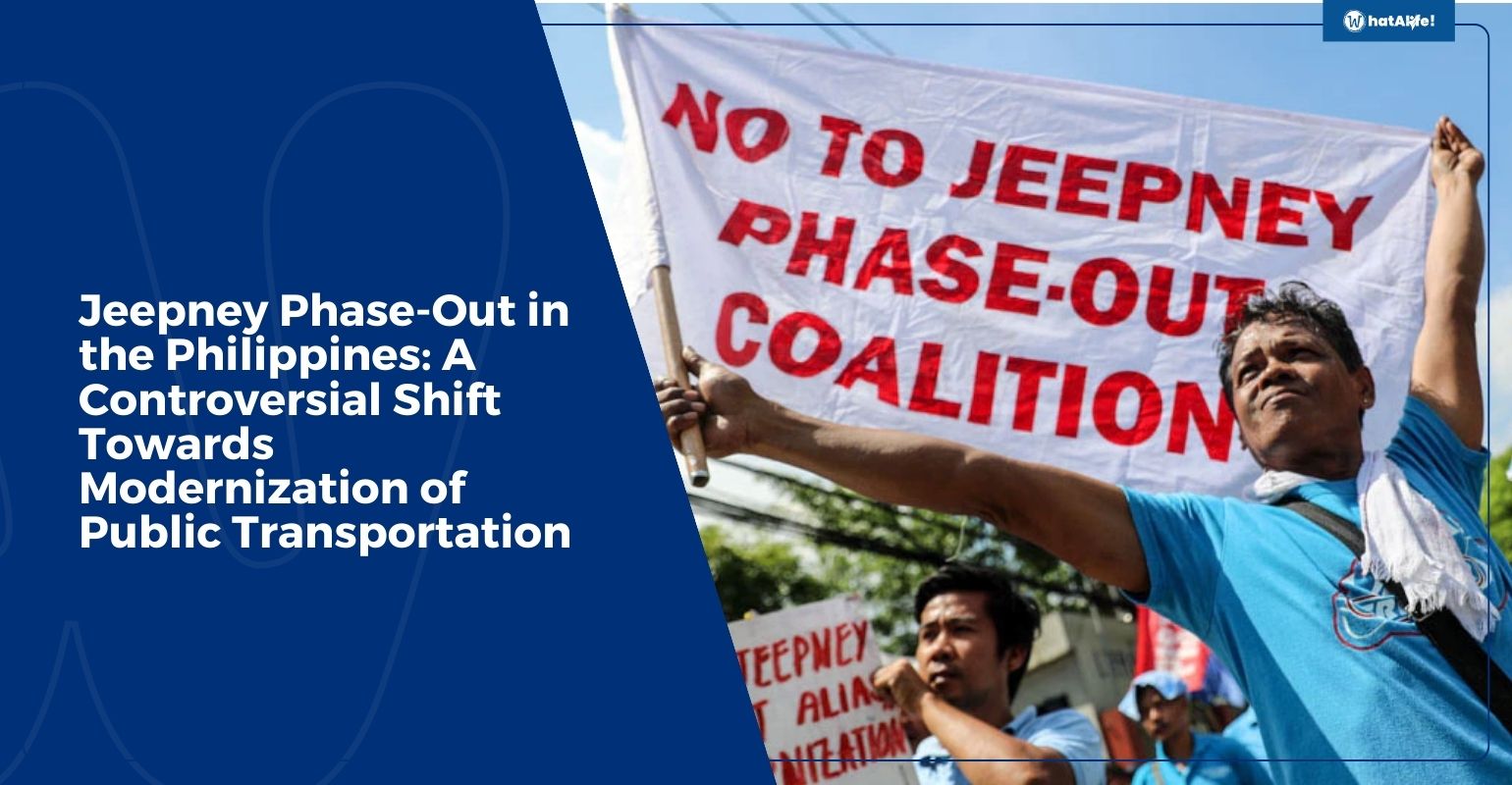
If someone asks, “What makes the Philippines unique?” many of us would answer with “jeepney,” a cultural icon that is endemic to our streets. Since the 1940s, they have been a staple of Filipino public transportation, originating from the World War II Willys General Purpose vehicles left by the American military. Jeepneys, known for their loudness, colorful designs, and affordability, have evolved from small vehicles into extended ones to carry more passengers. However, improvements in efficiency, safety, and comfort have been minimal. This has led to the controversial proposal of jeepney phase out in the Philippines, aiming to improve public transport by phasing out old vehicles and introducing new systems and standards for vehicles.

Table of contents
What is a jeepney phase out , scope of the phase out , proposal of jeepney phase out, opposition to jeepney phase out , conclusion .
As discussed in “The Jeepney Phase-out Explained,” published by Manila Bulletin, the jeepney phase-out is a significant revision of how Public Utility Vehicle (PUV) franchises are granted, along with the organization of routes. In essence, it’s a small part of a larger initiative called PUV Modernization.
Moreover, LTFRB defines Public Utility Vehicle Modernization Program (PUVMP) as the government’s response to address both the aggravating transport related problems and the future transportation demand of the country.
The program is designed to transform the public transport system in the country to global standards, making commuting more dignified and humane.
It also aims to improve the lives of Filipinos by providing a safer, more efficient, reliable, convenient, affordable, and environmentally sustainable transportation system.
Is the jeepney phase out nationwide? The answer is yes. The Congressional Policy and Budget Research Department (CPBRD) outlined in their Policy Brief No. 2020-02:
“The Philippine government launched the Public Utility Vehicle Modernization Program (PUVMP) in 2017 as a move towards changing the landscape of public transportation in the country.”
The abstract continued, “Despite PUVMP’s objective to provide a comfortable, accessible, reliable, environment friendly, and sustainable public transportation for every Filipino, several challenges impede the progress of its implementation.”
Who proposed the jeepney phase out? On September 21, 2016, jeepney operators and drivers planned to hold a nationwide transport holiday if the Congress passed a bill that would approve the newly named Department of Transportation’s (DOTr) plan to carry out the PUV phaseout program, among other projects. The bill also pushed to give emergency powers to former President Rodrigo Duterte to solve the transport crisis.
Role of Marcos in jeepney phase out
Under the administration of President Ferdinand R. Marcos Jr., Transportation Secretary Jaime Bautista emphasizes the necessity of modernizing PUVs, clarifying that the plan is far from being discarded.
Sec. Bautista added that the project will bolster the CASA program in the transport sector, generating more jobs and leading to more organized groups with efficient operations.
The modernization program will end the boundary system, allowing drivers to earn more within reasonable working hours, and will implement a standard to maximize the benefits of modern jeepneys nationwide.
On December 12, President Ferdinand Marcos Jr. announced that the government will not extend its year-end deadline for jeepney drivers to consolidate into cooperatives or corporations.
However, on December 28, the Land Transportation Franchising and Regulatory Board (LTFRB) announced that non-consolidated jeepneys could continue to operate on specific routes until January 31. This announcement was made despite the deadline for public utility vehicle (PUV) operators to consolidate operations or at least submit applications before the end of the year.
Since the start of the modernization program, some transport groups have labeled it as ‘anti-poor’. They argue that the responsibility of upgrading their vehicles will fall on the operators and drivers. Additionally, they suggest this could be a scheme to boost vehicle sales for foreign businessmen and large automotive companies.
According to a timeline by CNN on the government’s PUV phaseout program, transport groups like Piston, Stop and Go Coalition, Manibela and FEJODAP have conducted a series of nationwide protests since 2016. Online petitions such as ‘ No to Jeepney Phaseout and Public Utility Vehicle Modernization Program’ and ‘ NO TO JEEPNEY PHASE OUT ‘ were created.
On November 20, jeepney drivers held another strike against the government’s December 31 deadline.
PISTON national president Mody Floranda stated, “Wag na nila lituhin ang taumbayan. Ang franchise consolidation ay phaseout. Ang franchise consolidation ay pagbawi at pagmasaker sa mga indibidwal na prangkisa at pagpasa nito sa mga malalaking transport corporation na sila lang may kapasidad na magbayad at sumunod sa mga pakana ng gubyerno.”
The jeepney phase out brought by the modernization program brought several challenges to drivers and operators. The government is urging current drivers and operators to surrender their franchises, offering financial assistance for new vehicle acquisition or career change.
The new Public Utility Vehicles (PUVs) are expensive but compliant with regulations and more efficient. A ‘Cash for Clunkers’ program is being considered to incentivize the scrapping of old PUVs. However, the acquisition of land for operations presents a challenge, especially in developed areas with high land values.
Furthermore, Public Utility Vehicle (PUV) drivers and operators face challenges transitioning from a single franchise system to forming cooperatives, due to lack of knowledge in paperwork and business planning.
Additionally, securing loans is difficult due to the absence of viable business plans and banks’ requirements for clean records. Some PUV suppliers assist with paperwork, but resistance remains, particularly regarding banks’ handling of earnings and expenses once loans are granted.
In a recent report by CNA, there are concerns that the impending consolidation could result in the loss of thousands of jobs for drivers and operators who don’t join a cooperative and potentially increase transport costs.
Many traditional jeepney drivers are skeptical of the modernization program, believing that the traditional scheme offers better take-home pay.
Consequently, small jeepney operators are uncertain about how to form a cooperative due to a lack of information and support from the government. They also worry about losing money to corrupt or poorly managed cooperatives.
One operator expressed, “The modern jeepneys will be owned by the cooperative, not us. We would just be employees, so we don’t like the programme.”
Another operator said he feels he has no option but to relinquish his small business if it enables him to send his children to school.
“If they phase out jeepneys, many will starve and lose their livelihood. Many of us are 40 to 70 years old,” one driver said.
The jeepney phase-out in the Philippines, aimed at modernizing public transport, has been met with considerable opposition. While the plan promises improved efficiency, safety, and sustainability, concerns persist about the economic impact on drivers and operators. The transition to a cooperative system, high costs of new vehicles, and potential job losses have sparked nationwide protests led by transport groups who believe that the program is ‘anti-poor.’
Sources: (1) , (2) , (3) , (4) , (5) , (6) , (7) , (8) , (9) , (10)
Also Read: A General Guide to Employees Compensation Program
Leave a Reply Cancel reply
Your email address will not be published. Required fields are marked *
Save my name, email, and website in this browser for the next time I comment.
Latest News
- Jollibee’s newest addition, chicken nuggets on-the-go snack April 4, 2024
- KDLex gears up for first live concert “Add to Heart” April 4, 2024
- 10 Interesting Facts About the Solar Eclipse You Might Not Know April 3, 2024
- “Doc, were you born yesterday?” Tulfo, Herbosa clash over branded medicine April 3, 2024
- Child abuse charges arrest preacher Apollo Quiboloy April 3, 2024
Viral Stories
- 299-peso engagement ring issue ignites debate among netizens January 7, 2024
- Filipina Maid Gets Emotional as Employer Surprises Her with Gift July 6, 2023
- Pauline Carpio: What Happened to Her? June 13, 2023
- Cockroach Makes an Appearance at 2023 Met Gala and Walks the Red Carpet May 3, 2023
- Puppy rescues 5-year-old girl from house fire in GenSan April 27, 2023
Exam Results
- List of Passers – March 2024 Medical Technologists Exam Results March 25, 2024
- List of Passers – March 2024 Dental Technologists Exam Results March 7, 2024
- List of Passers – February 2024 Criminologists Exam Results March 7, 2024
- List of Passers – February 2024 Sanitary Engineers Exam Results February 27, 2024
- List of Passers – February 2024 Plant Mechanics Exam Results February 26, 2024
Lotto Results
- EZ2 2D RESULTS April 3, 2024 (Wednesday) April 3, 2024
- SWERTRES RESULTS April 3, 2024 (Wednesday) April 3, 2024
- SWERTRES RESULTS April 2, 2024 (Tuesday) April 2, 2024
- EZ2 2D RESULTS April 2, 2024 (Tuesday) April 2, 2024
- SWERTRES RESULTS April 1, 2024 (Monday) April 1, 2024

- Skip to main content
- Keyboard shortcuts for audio player
A Push To Modernize Philippine Transport Threatens The Beloved Jeepney

Ashley Westerman

Jeepneys, often known in the Philippines as "King of the Road," join traffic on a busy street in Manila last May. Authorities are moving to phase them out, citing pollution and safety concerns. Noel Celis/AFP/Getty Images hide caption
Jeepneys, often known in the Philippines as "King of the Road," join traffic on a busy street in Manila last May. Authorities are moving to phase them out, citing pollution and safety concerns.
Down a dark, cramped alleyway in the heart of densely packed Manila, a resistance movement is holding strong.
The movement is focused on protecting a beloved Philippine form of public transport, the passenger truck known as the jeepney — but to reach its headquarters in a nearly hidden lane, it's a good idea to ditch your own vehicle. The lane is so narrow that even the slightest wrong move could result in scratches or a dislodged side-view mirror from hitting a wall.
Outside the office's metal gate is a beat-up jeepney with a sign reading: "Ibasura ang Jeepney Phaseout!" or "No To Jeepney Phaseout!"
Inside, George San Mateo sits eating his dinner. He's a warm, welcoming man sporting a salt-and-pepper goatee, glasses and a newsboy cap. San Mateo, 51, has been a driver for almost three decades and now heads the transport rights group Piston, short for Pinagkaisang Samahan ng mga Tsuper at Operator Nationwide, or "unified nationwide organization of drivers and operators." It's in this role that he's leading the resistance to a government plan to "modernize" old jeepneys and replace them with newer, more eco-friendly models.

A jeepney adorned with eye-catching lettering sits parked in at a gas station in Calamba, Leguna, about an hour south of the capital Manila. Jeepneys often sport a name, phrase or symbol important to their driver. Ashley Westerman/NPR hide caption
A jeepney adorned with eye-catching lettering sits parked in at a gas station in Calamba, Leguna, about an hour south of the capital Manila. Jeepneys often sport a name, phrase or symbol important to their driver.
"Piston has no problem with modernization because we consider ourselves progressive," San Mateo says. "We are progressive, so we are not anti-development. But the problem with the modernization program ...it is anti-poor and profit-oriented."
Jeepneys have become synonymous with Philippine daily life. The first were cobbled together using parts of surplus Jeeps left behind by American troops after World War II. The Filipinos converted them into transport vehicles that could hold between 15 to 20 people at a time (though not all those passengers may actually fit inside the vehicle).

George San Mateo is the leader of Piston, a nationwide transportation workers' rights group in the Philippines. He's called on President Rodrigo Duterte to scrap the current transport modernization plan and create a new one focusing on nationalizing transport. Ashley Westerman/NPR hide caption
George San Mateo is the leader of Piston, a nationwide transportation workers' rights group in the Philippines. He's called on President Rodrigo Duterte to scrap the current transport modernization plan and create a new one focusing on nationalizing transport.
"The reason why jeepneys became the dominant mode of transport [is] because after World War II, the government did not establish a mass transport system," San Mateo explains.
Though numbers are hard to come by, various estimates say there are somewhere between 180,000 and 270,000 franchised jeepneys on the road across the Philippines, with some 75,000 in Metro Manila alone. Studies have shown they are the country's most popular mode of transportation, taking millions to and from work every day. They're easy to spot on the traffic-choked roads, often painted with bright colors and adorned with flashy ornaments. Many jeepneys sport names or slogans painted in big, elaborate fonts.

Passengers ride in a jeepney in Manila. Depending on the size, a jeepney can hold up to 20 people. While the vehicles have designated routes, they don't have designated stops, meaning riders hop on and hop off whenever they choose. Ashley Westerman/NPR hide caption
Passengers ride in a jeepney in Manila. Depending on the size, a jeepney can hold up to 20 people. While the vehicles have designated routes, they don't have designated stops, meaning riders hop on and hop off whenever they choose.
The jeepneys are often blamed for heavy traffic congestion because of their indiscriminate stopping and going to let people on and off. They have designated routes but no designated stops, so they operate much like hop-on-hop-off buses.
And while jeepney bodies have changed over time (almost all parts are now made overseas and shipped to the Philippines to be assembled), the vehicles are notorious polluters. While jeepneys can run on both gasoline and diesel, a 2016 study by the Manila Observatory, a nonprofit science research institute, found that diesel-fed jeepneys were responsible for 15 percent of the particulate matter emissions in Metro Manila.
That's why the government of President Rodrigo Duterte plans to take all jeepneys 15 years or older off the roads and replace them with a more eco-friendly, minivan-like version that's bigger, safer and produces fewer emissions. The modernization plan started in January, and the government hopes to have all old jeepneys off the road by 2020.
But San Mateo says placing the blame for pollution solely on jeepneys is unfair in a city with so many other polluting vehicles. He says if the government didn't impose so many fees, fines and penalties on jeepney drivers and operators, they would have more money to maintain their sometimes dilapidated vehicles.

A jeepney crowned with the name "Morning Glory" navigates a Manila street during rush hour. Many jeepneys reach areas of the city where other public transit does not go. Ashley Westerman/NPR hide caption
A jeepney crowned with the name "Morning Glory" navigates a Manila street during rush hour. Many jeepneys reach areas of the city where other public transit does not go.
In Metro Manila, a city of 12 million-plus and one of the most densely populated urban areas in the world, jeepneys are second only to walking when it comes to getting around. They're the cheapest option by far, with rides costing an average of 8 Filipino pisos, about 16 cents. Jeepneys are a popular option over the city's light rail system, taxis, commuter buses and even trikes — motorcycles with sidecars — across income levels, but especially for the poor. Despite a fast-growing economy, millions of Filipinos remain below the poverty line .
"Let us remember that jeepney commuters are some of the poorest of the poor in the Philippines," says Mateo. "Our vast passengers are not Uber-riding passengers, these are minimum-wage earners and their sons and daughters."
Jeepney drivers and operators don't earn a lot, either. San Mateo says a driver makes about 500 to 600 pisos, or about $11, for two days of work. Earnings depend on factors such as profitability of the route, passenger volume and seating capacity. San Mateo says top-of-the-line jeepneys today cost about 600,000 to 700,000 pisos, or $11,000 to $13,000. The new model the government wants them to purchase costs 1.6 million to 1.8 million pisos, or between $30,000 and $35,000.
San Mateo warns that the costs to run and maintain these newer models will be passed on to commuters in the form of increased fares.
"That's why there's a deadlock on this," says San Mateo. "So we have no choice but to fight back and launch transport strikes and transport protests."

Raffy Solongon (in rear-view mirror), 47, drives his jeepney through Makati City in Manila. He earns about $10 a day and is one of thousands of drivers who say they can't afford the new jeepney model the government wants them to buy. Ashley Westerman/NPR hide caption
Raffy Solongon (in rear-view mirror), 47, drives his jeepney through Makati City in Manila. He earns about $10 a day and is one of thousands of drivers who say they can't afford the new jeepney model the government wants them to buy.
He wants President Duterte to scrap the current plan and work toward nationalizing the public transport system so drivers might get government help to buy or operate their jeepneys.
"What we want in a modernization program...[is] the framework should be socially just, democratic, public service-oriented and its long-term perspective should be nationalization of public transport," San Mateo says. "But government doesn't want that."
Last year, San Mateo helped organize two strikes: a jeepney drivers' strike in February, which San Mateo was arrested for leading , and a two-day, nationwide transport strike in October. The government has filed a case against San Mateo in connection with the October strike.
"You're poor?" Duterte snapped in a speech, addressing drivers during the October protests. "Son of a bitch, suffer hardship and hunger. I don't care."
Duterte's administration has rebuffed criticism that the plan is "anti-poor," and claims its goal is not to completely phase out jeepneys, but to make them more efficient and profitable. It wants to establish new routes with designated drop-off and load points and restructure and consolidate the ownership of jeepneys.
Riders seem split on the issue.
"It's better for the environment," says Win Tan, who rides a jeepney to work every day to her job as a car rental assistant. "But for the operators, it's not that good."
Cath Volentino is a tax consultant who has been riding jeepneys since she was a kid.

Jeepneys line up at a depot in Makati City in Manila. Jeepneys are the main mode of transportation for Filipinos nationwide, moving millions to and from work every day. Ashley Westerman/NPR hide caption
Jeepneys line up at a depot in Makati City in Manila. Jeepneys are the main mode of transportation for Filipinos nationwide, moving millions to and from work every day.
"The government is quite right that people need to have a better ride, but how about those jeepney drivers that can't afford to have a new jeepney?" she says. "It's okay if the government wants to provide for them, but it's quite a hassle."
Jose Gamo, who has also been riding jeepneys since he was a child, says the government's plan could lead to chaos for commuters.
"I think the government needs better time to help the jeepney operators adjust to the change, as well as help the commuters," he says. "Because if you phase out everything, there won't be enough new jeepneys immediately. So you need better planning for transition."
Gamo says he can't imagine a Manila without the jeepneys he knows and loves.
"It's going to be incredibly hard to get around anywhere," he says.
Back at Piston's headquarters, San Mateo says he and his fellow jeepney drivers have no intention of letting that happen.
"We are not yet giving up," he says, "so we are not yet entertaining a post-defeat scenario."
- transportation
- Philippines
- Subscribe Now
IN NUMBERS: Why jeepney phaseout is anti-poor, will do little for environment
Already have Rappler+? Sign in to listen to groundbreaking journalism.
This is AI generated summarization, which may have errors. For context, always refer to the full article.
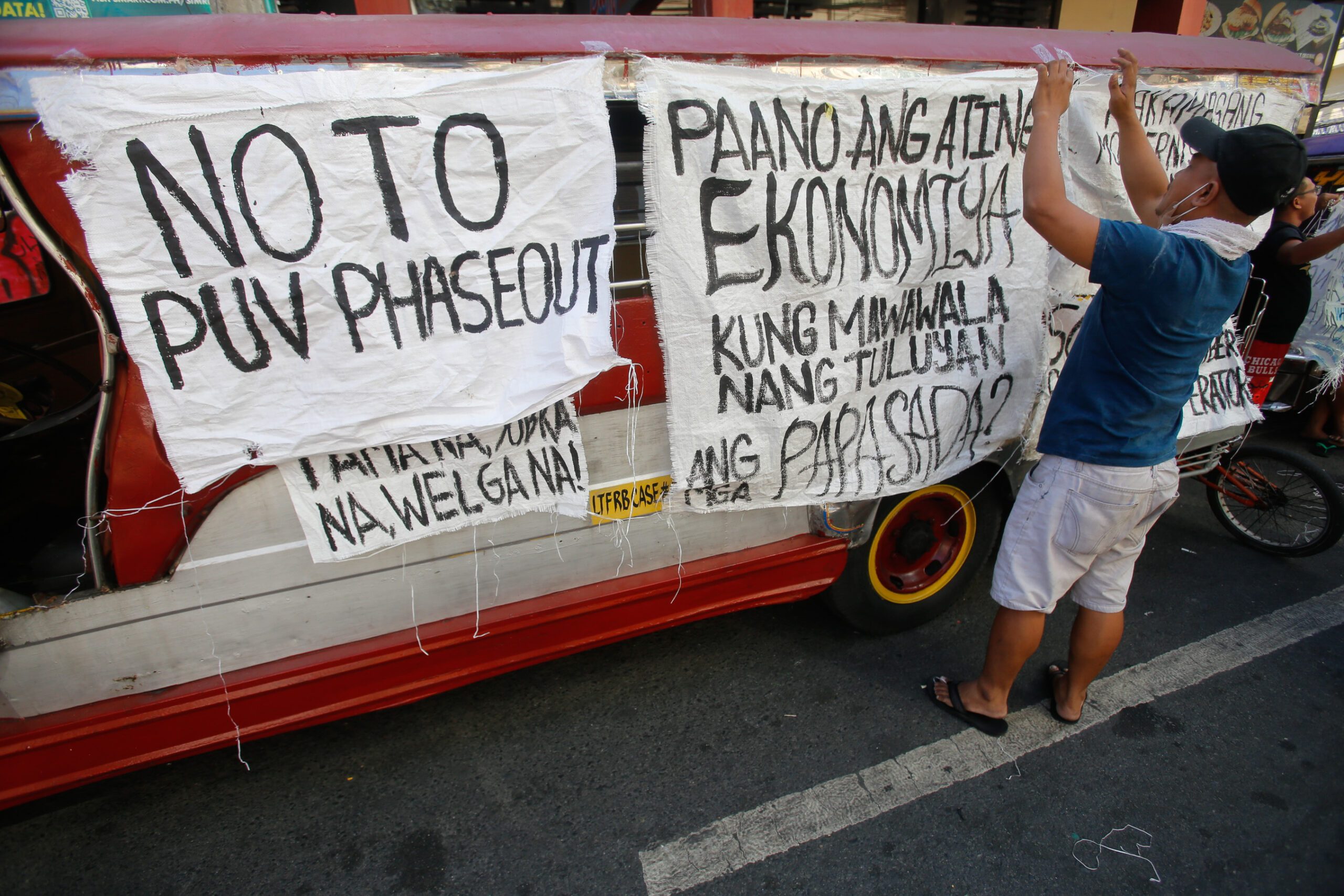
FREE RIDE. The local government of Manila utilizes e-Trike for 'Libreng Sakay' vehicle for stranded passengers as jeepney drivers and their supporters plying the Morayta-Divisoria route conduct a 'tigil pasada' protest along Morayta, during the first day of the week-long transport strike, on March 6, 2023.
MANILA, Philippines – The Philippine government’s move to force jeepney drivers to shift to the more environment-friendly, modern jeepney has faced backlash over its anti-poor terms.
The Land Transportation Franchising and Regulatory Board (LTFRB) is forcing drivers and operators to use an electric vehicle or a combustion engine that complies with a Euro IV emission standard, as prescribed by the Department of Environment and Natural Resources to reduce greenhouse gas emissions, toxic fumes, and other forms of air pollution.
But here are some numbers that show that the government’s modernization plan is clunky at best:
2% Jeepneys comprise only 2% of the total registered vehicles in the Philippines
According to data from the Department of Energy and LTFRB, there are over 9 million registered vehicles in the Philippines. Of the total, jeepneys comprise only over 250,000. Of the total jeepneys, around a quarter operate in Metro Manila.
15% Jeepneys and other public utility vehicles contribute 15% of the total particulate matter emissions in manila
While jeepneys play an important role in providing services in the country, a study by the Blacksmith Institute and Clean Air Asia found that diesel-powered jeepneys contribute 15% of the total particulate matter emissions in Metro Manila.
The Center for Energy, Ecology and Development (CEED) argued that air pollution reduction efforts “would be negligible if modernization efforts focused on jeepneys compared to private vehicles.”
“Not to mention, private car owners would also be more likely financially capable of modernizing their vehicles,” CEED said.
Jeepneys are mostly fitted with imported, second-hand engines which have higher emissions than modern diesel technologies.
The study also found that the majority of jeepney owners own only one unit, making it difficult for them to save on costs and properly maintain vehicles.
1,766.7% The modern jeepney is 1,766.7% more expensive than the traditional jeepney
A traditional jeepney costs around P150,000 to P250,000. A modern e-jeepney would force drivers and operators to cough up as much as P2.8 million, a 1,766.7% increase in cost.
5.7% The government’s proposed subsidy covers only 5.7% of the total cost
The LTFRB said that a subsidy of P160,000 will be provided. This is only 5.7% of the total cost of the modern jeepney.
Rappler was able to talk to some jeepney drivers who said that they earn around P2,000 per day. Should they upgrade to modern jeepneys, they would need to earn at least P3,500 to pay off their debt.
The LTFRB insists only operators who have consolidated into either a cooperative or corporation will be allowed to operate. Jeepney drivers fear that the program would eventually phase out their units and require them to buy new modernized jeeps that they can’t afford.
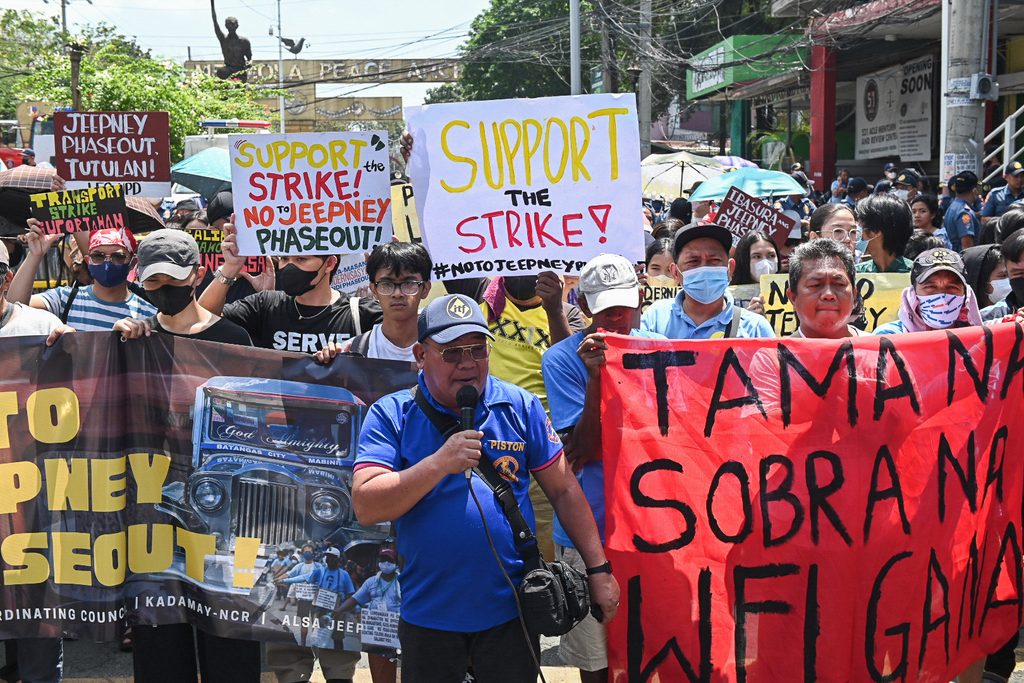
Past efforts
Before the PUV modernization push, several programs had been explored in the past but failed.
In 2007, the DENR explored the replacement of old engines used in jeepneys with new engines. Mitsubishi UFJ Securities and the University of the Philippines-National Center for Transportation Studies were asked to come up with a proposal. They found that new engines cost P300,000.
But the plan failed as the program needed additional public and private funding.
In 2011, liquefied petroleum gas or LPG jeepneys were launched. By using LPG engines, jeepneys became Euro III-compliant.
However, this also failed since the engine and transmission components cost P350,000 and LPG stations were limited.
In 2008, the first electric jeepneys were introduced in Makati City through the Institute for Climate and Sustanable Cities and the Philippine Utility Vehicle. Limitations in battery capacity limited these e-jeepneys to shorter routes.
Marcos’ broken promise: Why jeepney drivers protest modernization
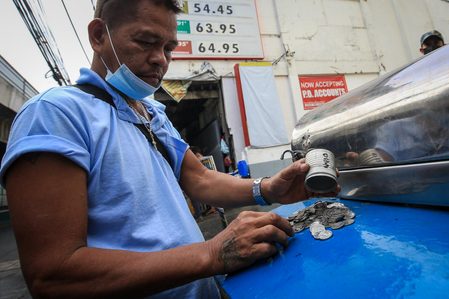
Just transition
During the 19th Congress, former Manila 1st District representative Manuel Luis Lopez filed a just transition bill that aimed to shift drivers to e-vehicles with sufficient financial support from government.
His proposal included the following:
- Vehicle subsidy – The Department of Transportation (DOTr) will provide financial assistance to drivers and operators not lower than 50% of the cost per unit of modern jeepneys.
- Fuel subsidy – The DOTr will pay a portion of the fuel consumed by affected drivers on a bi-weekly basis.
- Concessional loan – A tripartite mechanism including the government, financial institutions, and transport workers will establish a loan program. The interest rate will not exceed 1% annual interest. The loan amortization will be at least 15 years, subject to recomputation if the transport worker decides to shorten the said period.
- Financial assistance – Drivers who cannot be part of the transportation industry due to their incapacity to take out a loan will be given no less than P300,000 to shift to other forms of livelihood.
– Rappler.com
Add a comment
Please abide by Rappler's commenting guidelines .
There are no comments yet. Add your comment to start the conversation.
How does this make you feel?
Related Topics

Recommended Stories
{{ item.sitename }}, {{ item.title }}, public transportation, seoul bus drivers end strike after city agrees to wage increase.
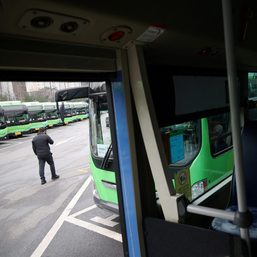
#KomyuterDiaries: Traveling from different parts of Metro Manila
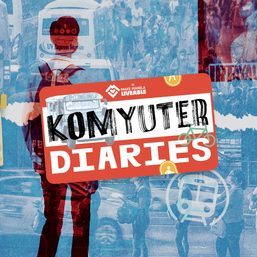
Cebu City mayor files complaint vs Gwen Garcia over BRT stoppage

Newsbreak Chats: What it’s like to be a bike commuter in Metro Manila
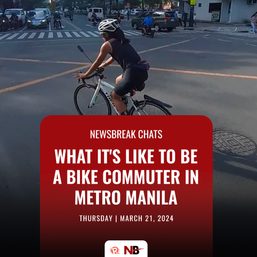
MAP: Metro Manila Subway stations
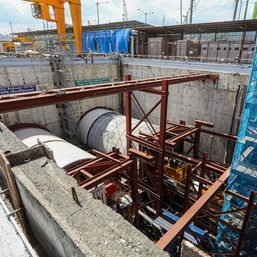
Checking your Rappler+ subscription...
Upgrade to Rappler+ for exclusive content and unlimited access.
Why is it important to subscribe? Learn more
You are subscribed to Rappler+
- Agri-Commodities
- Asean Economic Community
- Banking & Finance
- Entrepreneur
- Executive Views
- Export Unlimited
- Harvard Management Update
- Monday Morning
- Mutual Funds
- Stock Market Outlook
- The Integrity Initiative
- Editorial cartoon
- Design&Space
- Digital Life
- 360° Review
- Biodiversity
- Environment
- Envoys & Expats
- Health & Fitness
- Mission: PHL
- Perspective
- Today in History
- Tony&Nick
- When I Was 25
- Wine & Dine
- Live & In Quarantine
- Bulletin Board
- Public Service
- The Broader Look
Today’s front page, Wednesday, April 3, 2024

- Photo Gallery
Analyzing the Jeepney Phaseout and Its Pros and Cons
- BusinessMirror
- August 30, 2022
- 5 minute read
Table of Contents Hide
Defining “modernization”, the pros of transport modernization: justifying the phaseout, the cons of transport modernization: arguing for the people phaseout, weighing the jeepney modernization’s pros and cons: finding the balance.
Traffic has always been a huge problem in the country. Several urban planners recently stressed that the government must focus on modernizing the transport system particularly in Metro Manila “because there is no solution to the traffic.” Public transportation, particularly jeepney, modernization has been a touted solution with pros and cons being heavily discussed by various stakeholders.
As a response, the Traffic Crisis Act, or House Bill (HB) 4334, and the Department of Transportation’s (DOTr) transport modernization program was proposed in congress and government institutions. The program includes jeepney modernization as one of its main parts. Unfortunately, this initiative towards transportation modernization has been met with criticism of being anti-poor.
There will always be pros and cons to any issue. The government’s transport-modernization program, aimed mainly at jeepneys, buses, school buses and others, is no exception. In this article, we discuss the pros and cons of jeepney phase out.
The government is right to modernize the jeepneys. If it follows its own definition that a modern transport is “roadworthy, safe, reliable” and, above all, “prevents pollution” or has “emissions within acceptable standards.” If that is the case, then transportation modernization is certainly a necessity.
The definition of modernization is extended by Land Transportation Franchising and Regulatory Board (LTFRB) Resolution 2013, dated January 11, 2013, to mean a “strict 15-year age limit on public-utility vehicles, from the date of manufacture of the vehicle instead of the date of initial registration with the Land Transportation Office [LTO].”
Transportation modernization certainly has its pros. Vehicle dealers, manufacturers, and financiers will rejoice at this new replacement market as it translates to massive spurts in business. The jeepney phase out, however, has both pros and cons–especially when we talk about one of the main stakeholders: the drivers.
Several jeepney groups oppose the phase out, including the newly formed National Jeepney Federation for Environmental Sustainable Transport (NJFEST). Headed by Ronald Baroidan, the NJFEST disagrees with the looming transportation modernization program, but seriously wants to comply with the Clean Air Act (CAA). While each sector adds onto the debate of jeepney phase out pros and cons, NJFEST grabs this chance as its “defining moment” to address why the government’s definition of modernization is partly wrong.
Exploring the Jeepney Phaseout’s Pros and Cons
With traffic ever-increasing and carbon emissions rising, it seems that modernizing mass transport is a step in the right direction. However, drivers and operators are unsatisfied with its current parameters. This issue remains and the transportation sector in elections is a common topic.
In this part, we discuss the advantages and disadvantages of jeepney modernization:
Here are some of the benefits of the jeepney phase out:
Higher Job Demand for the Transport Sector
One of the biggest pros of jeepney modernization is that it can provide the country with more jobs. The jeepney modernization potentially raises the need for skilled drivers and operators. With newer models needed, there is also a higher demand for workers and laborers in vehicle manufacturing.

Lessened Carbon Emissions
Older jeepney models emit a lot of carbon and have often been cited as violators of the Clean Air Act. As the country leans towards a greener standpoint, modernizing jeepneys is one of the steps that the government sees fit. With newer units, a significant decrease in carbon emissions is expected.
On the other hand, here are the disadvantages of the transport modernization:
Modern jeepneys are expensive. A modern jeepney costs about 600,000-700,000 PHP, while the government’s preferred units cost around 1.6-1.8 million PHP. The average jeepney driver earns around 500-600 PHP a day–but with rising costs of gasoline and other factors, it is safe to assume that they earn less.
Drivers and transport laborers point out how out of budget these units are, even with government assistance. Many drivers express that they have no objections to PUV modernizations, especially with all its pros. However, cost is a big con that they cannot overlook.
Possible Lack of Jeepneys
When we talk about the jeepney phase out’s pros and cons, we also need to consider the possible impacts. One of the biggest impacts that the jeepney phaseout can have is the severe lack of jeepneys in the country. As less and less jeepneys ride, commuters may find it difficult to catch a ride.
The government should have an option that provides a more affordable way for drivers to acquire one of the vehicles. Otherwise, it is not an exaggeration to say that many drivers will have issues getting one. This will inevitably lead to a severe lack of PUVs and can even lead to bigger difficulties in traffic.
Minimal Environmental Impact
A study done by the VTT Technical Research Centre of Finland shows almost a direct correlation of the effects of PAHs or LCOs on emissions. By reducing PAH content in diesel by 80 percent from 5-percent weight content to only 1 percent, PAH-related emissions also dropped massively by a range to as much as 80 percent. Sweden A-1 diesel is now down to a PAH-content of 0.02 percent with Finland at 0.2 percent owing to a tax incentive to refiners, but average PAH content in diesel in Europe is still about 4.5 percent, with a few still high at 10 percent. Bringing it down to 6 percent costs the industry in Europe about €312 million, and will increase costs for every drop in PAH content to as high as €2.249 billion at 1-percent content.
In short, what we do not see is how diesel is produced behind the scenes, somehow coming out now from behind from the tailpipe emissions. But science now tells us that when a vehicle farts from behind, these can still be measured, even if many toxic fumes, like carbon monoxide, are odorless and invisible.
Minimal Traffic Congestion Difference
Jeepneys have always been looked at as a violator of the Clean Air Act and a cause of congestion in roads. Unfortunately, what many fail to realize is that the number of private cars also contribute to air pollution and traffic congestion. Simply proposing transport modernization is not a complete solution.
Ishmael Ace Sevilla, chairman of the NCR Toda Coalition of 17 Metro Manila Toda federations, claims he could not also understand why franchises of tricycles and pedicabs will be revoked within six months upon publication of HB 4334 once enacted into law (Section 15), when the traffic is on major roads like Edsa, where tricycles are banned anyway. Tricycles only service the secondary and tertiary roads.
The bill is aimed to ease traffic as a small treat, perhaps, to commuters and motorists complaining about traffic, but it appears it’s more a threat to small guys, who only earn a few hundred pesos a day.
The jeepney phaseout is a longstanding issue that affects many sectors in the country. From commuters to jeepney drivers, stakeholders have spoken about their perceived pros and cons on the issue. While the government has put this on hold, many experts and citizens continue to weigh in on how transport modernization can be done more efficiently.
Image credits: Dreamstime.com
Related Topics
- jeepney modernization program
- jeepney phaseout
- PUV modernization
Editorial Cartoon August 30, 2022
- BusinessMirror Editorial
Clarkson doesn’t disappoint

PHL, Australia usher new era in their Strategic Partnership
- HK Yu, PSM | Australian Ambassador to the Philippines
- April 4, 2024

Editorial Cartoon April 04, 2024
Chinese mafia members arrested for fraudulent govt document scheme, tax the shadow economy.
- John Mangun
Biden, Xi spoke by phone about AI risks, Russia and fentanyl
- Michelle Jamrisko & Jennifer Jacobs | Bloomberg
- April 3, 2024
US-Europe gripes on China over capacity aren’t all backed by data
- Tom Hancock | Bloomberg News
Trudeau offers billions to boost homebuilding, with strings attached
- Brian Platt | Bloomberg
Biden escalates criticism of Israel after aid worker deaths
- Josh Wingrove | Bloomberg
- Tessa Jazmines
The Future of Newspapers in the Digital Age
- Henry J. Schumacher
Concerning developments
- Dr. Conchita L. Manabat

Editorial Cartoon April 03, 2024
Long-term solutions needed to address phl food inflation.

Tourism infrastructure
- Mark Villar
Recovering from mistakes
- Carlo Atienza
Boatwright right on the dot
- Al S. Mendoza
- April 2, 2024
Xi’s cryptic bond comments hint at PBOC becoming more like Fed
- Bloomberg News
North Korea fires ballistic missile ahead of South’s vote
- Jon Herskovitz & Soo-Hyang Choi | Bloomberg
Trump gag order expanded by NY judge before hush-money trial
- Patricia Hurtado | Bloomberg
A $15,000 Rolex threatens to worsen Peru leader’s 9% approval rating
- Marcelo Rochabrun | Bloomberg
Leave a Reply Cancel reply
Your email address will not be published. Required fields are marked *
This site uses Akismet to reduce spam. Learn how your comment data is processed .
Input your search keywords and press Enter.

IMAGES
COMMENTS
However, there are advantages and disadvantages to the jeepney phase-out, particularly when we consider one of the key stakeholders: the drivers. The ability to increase employment across the nation is one of the main benefits of modernizing the jeepney. The modernization of the jeepney could increase the demand for qualified operators and drivers.
The jeepney phaseout – or modernization, or whatever you want to call it – is not solely a transport issue. It intersects with others, such as livelihood, the environment, safety, culture, and ...
out these cars due to safety and environmental concerns. The jeepney phase-out will be analyzed in this essay, along with the reasons for and against it, as well as its probable effects on Filipino society. The jeepneys' negative environmental effects are one of the key arguments in support of their phase-out.
Proposal of jeepney phase out. Who proposed the jeepney phase out? On September 21, 2016, jeepney operators and drivers planned to hold a nationwide transport holiday if the Congress passed a bill that would approve the newly named Department of Transportation’s (DOTr) plan to carry out the PUV phaseout program, among other projects.
The colorful, crowded vehicles are a cheap and popular form of public transport. But they also pollute the air. Jeepney drivers have been pushing back against government plans to phase them out.
Modernized Public Utility Jeepneys. Photo from Carmudi Philippines.. These cost around Php 2.4 to 2.6 million — a drastic comparison to the Php 200,000 to 600,000 cost of traditional jeepneys ...
A traditional jeepney costs around P150,000 to P250,000. A modern e-jeepney would force drivers and operators to cough up as much as P2.8 million, a 1,766.7% increase in cost. 5.7%. The government ...
High Cost. Modern jeepneys are expensive. A modern jeepney costs about 600,000-700,000 PHP, while the government’s preferred units cost around 1.6-1.8 million PHP. The average jeepney driver ...